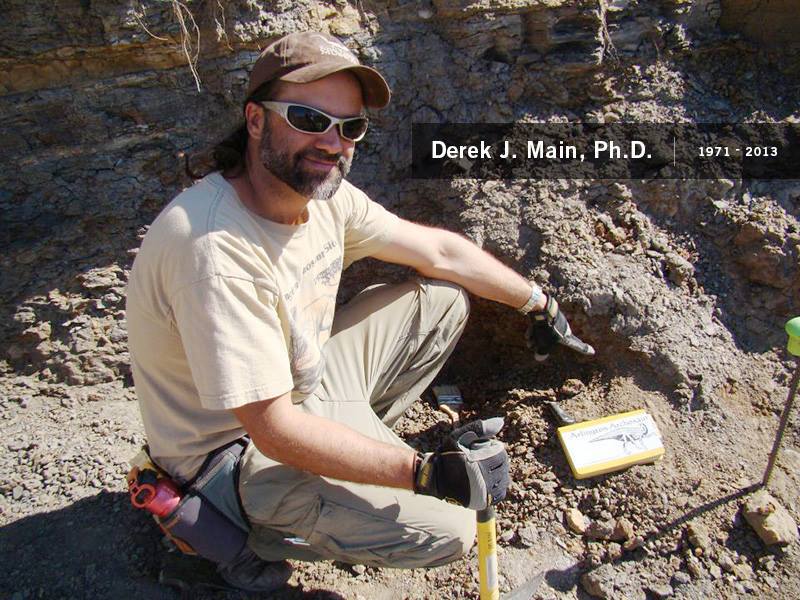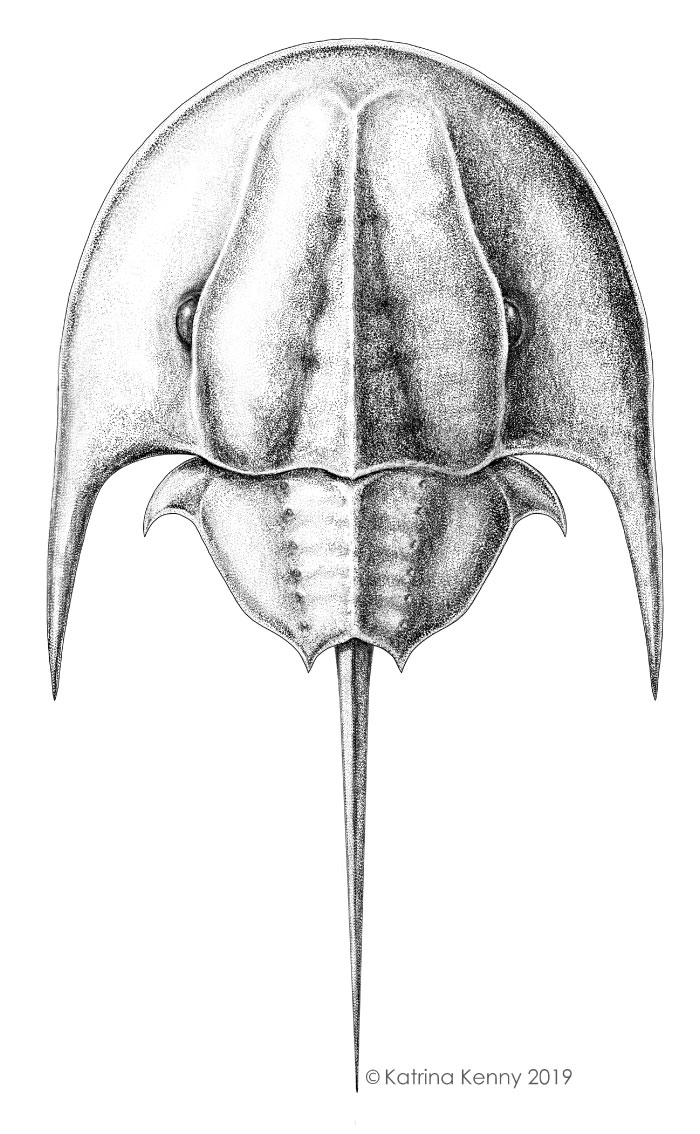Article Search
 A sabre-toothed cat from Brazil
A sabre-toothed cat from Brazil
A recent paper in Palaeontologia Electronica (PE) by Dr. Artur Chahud describes a sabre-toothed cat specimen from the Cuvieri Cave of eastern Brazil. Caves are ideal places to find fossil specimens. The vertical cavities of this particular cave serve as “traps” for unsuspecting animals walking along the ground surface. After falling in it can be almost impossible to get out. Caves are also great at preventing erosional processes which would normally weather remains found at the surface, which is why there are often fossils of varying ages within the same cave. Inside the Cuvieri Cave, recent specimens of peccary, rodent, deer, and small reptiles are found alongside extinct specimens of Xenarthrans, ground sloths, Cuniculus (an extinct rodent), and Pleistovultur (an extinct vulture).
 Investigating CT Scans as a Palaeontology Research Tool
Investigating CT Scans as a Palaeontology Research Tool
You are probably familiar with a computed tomography (CT) scan; that medical machine that takes a bunch of x-ray scans of a person’s internal anatomy. If you haven’t had a CT scan yourself, you most likely know someone who has. CT scans are a great non-invasive technique that can be used to diagnose internal injuries and disease. What you may not know, is that CT scans can also be useful to look at structures of fossils.
Dr. Rosie Oakes and her colleagues recently published an article in Palaeontologia Electronica on how CT scans can best be used for palaeontology research. “If you want to see inside an object but you don’t want to (or aren’t allowed to) smash it with a hammer, you can use a CT scanner” says Dr. Oakes.
Introducing our new Executive Editor, Dr. Carolin Haug!
Palaeontologia Electronica (PE) would like to welcome its newest executive editor to the team, Dr. Carolin Haug! Dr. Haug has been part of the PE team since 2014, working as a handling editor. Please allow me to introduce Dr. Haug, her work, and her anticipations for this new role!
 Happy New Year!
Happy New Year!
Palaeontologia Electronica (PE) would like to wish you all a Happy New Year! This past year in 2019 was our biggest yet publishing over 80 papers! (Not bad for an open access journal run entirely on a volunteer basis!) We would not have been able to achieve this without our amazing staff, authors, researchers, and followers. Thank you for making PE such a success. As we enter our 23rd year in 2020, we look forward to reaching more milestones along our journey as a completely open access palaeontology journal.
For our first blog of 2020, we would like to welcome Dr. Lydia Tackett to the PE team as our new Editorials Editor! Dr. Tackett first became interested in paleoecology as a junior undergraduate. It was during a primatology course, when she had an epiphany after being introduced to papers regarding mass extinctions and ecological selectivity during intervals of crisis. Dr. Tackett is now an Assistant Professor of Geology at North Dakota State University where her research focuses on marine shelly fauna from the Late Triassic. Follow along with her interview below!
 Late Cretaceous Turtles
Late Cretaceous Turtles
A recent paper published in Palaeontologia Electronica highlights a treasure trove discovery of fossil turtles from the Arlington Archosaur Site (AAS) Woodbine Formation in Texas, including a new species “Trinitechelys” maini. The AAS is known for its archosaur fossils. Archosaurs are vertebrates that have a single opening in their skull on the left and right side. Crocodiles and birds are modern archosaur examples, while all dinosaurs and pterosaurs are extinct members of the group.
 Image of the late Dr. Derek Main, the founding paleontologist of the AAS, after whom the new species "Trinitichelys" maini was named.
Image of the late Dr. Derek Main, the founding paleontologist of the AAS, after whom the new species "Trinitichelys" maini was named.
 Massive Herpetofauna Discovery in Maramena, Greece
Massive Herpetofauna Discovery in Maramena, Greece
A new paper published in Palaeontologia Electronica (PE) describes the most diverse assemblage of amphibians and reptiles ever preserved in Europe across the Miocene-Pliocene boundary. Herpetology is the study of reptiles and amphibians where herpetofauna refers to the reptiles and amphibians of a particular habitat, region, or period in geologic time.
Dr. Georgios L. Georgalis (University of Torino) studies fossil herpetofaunas and described this bountiful discovery from the Neogene of Maramena, Greece, along with his colleagues from German, Czech, and Swiss Universities. More specifically, these fossils span the late Miocene to early Pliocene boundary just over five million years ago when the European continent experienced several climatic and environmental shifts. Herpetofaunas naturally are very sensitive to such changes and suffered extinctions to several clades across the region during this time.
 Reclassification Determines a New Genus of Fossil Horseshoe Crab
Reclassification Determines a New Genus of Fossil Horseshoe Crab
Identifying taxa and how they are related to one another (a field known as systematics) can be challenging. This is especially true of fossils where preservation can be variable and evolutionary stories are long and complex. As a result, classification is consistently revisited and modified as new discoveries provide a larger overall picture of how living things are related to each other.
A recent taxonomic revision published in Palaeontologia electronica (PE) has reclassified a horseshoe crab specimen and instead identified it as a new genus and species. Originally part of the family Paleolimulidae, the new species Tasmaniolimulus patersoni has also been moved into a different family: Austrolimulidae.
 Reconstruction of Tasmaniolimulus patersoni gen. et sp. nov.
Reconstruction of Tasmaniolimulus patersoni gen. et sp. nov.
 Giraffids Presented at the First Palaeontological Virtual Congress
Giraffids Presented at the First Palaeontological Virtual Congress
The widespread availability of technology is advancing not only research itself, but the ways through which research is communicated to a broader audience. In December 2018, the very first Palaeontological Virtual Congress (PVC) was held connecting the palaeontological community all over the world through the internet. Palaeontologia Electronica (PE) has the pleasure of publishing research presented at the PVC in a special issue you can access here.
Dr. Maria Rios is an author on the first paper published in this special issue and comments on her experience at the PVC.
 Biostratigraphy for Invertebrate Fossils
Biostratigraphy for Invertebrate Fossils
Biostratigraphy is a tool in palaeontology where fossils are used to date rocks in a relative sense. Throughout Earth’s history, in times of bursting diversity, species in the fossil record can be used to tell the relative age of the surrounding rocks.
For example, let’s say you were in the field and discovered ‘Species Y’. You know ‘Species Y’ appeared in the rock record after ‘Species X’ but before ‘Species Z’, so you can determine a relative age for the rocks you are looking at. In many cases, the best fossils for biostratigraphy are those that are found in high abundances over a large geographic area that preserve very well and live for a short time interval before dying out.
A New Eocene Crab Species
A recent article published in Palaeontologia Electronica (PE) highlights a discovery of a new species of fossilized crab from the Middle Eocene (47-41 million years ago) of Spain. Kromtitis is a well-known genus of Eocene crab that has a rather ornate shell carapace with examples from Italy, Hungary, Austria, Denmark and even the Neogene of Jamaica. This finding however is the first for the Iberian Peninsula.
- Ancient Trophic Interactions
- A fossil beaked whale from Hokkaido, Japan
- The forelimbs of Dilophosaurus: What can they tell us about an iconic dinosaur?
- The Strange Teeth of the Carboniferous Shark Edestus
- When Slow Evolution is the Best Survival Tactic
- Unlocking the secrets of the thylacine
- Introducing Meeksiella pskovensis: an impeccably preserved Ptytodont
- Treasures from Eocene Baltic Amber
- Scotland’s Silurian Fauna and the Importance of Taxonomic Revision
- An Overview of Open Access Publishing in Palaeontology


